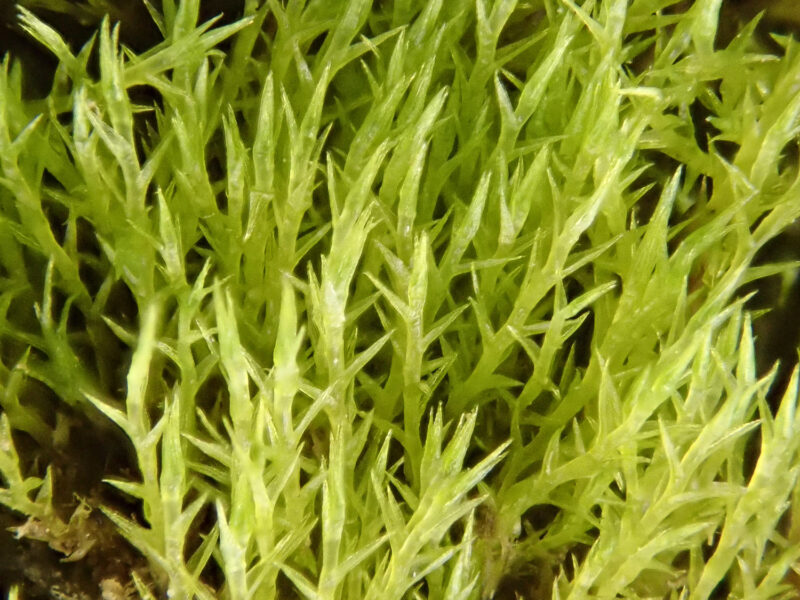Identification note
When first encountered, Archidium alternifolium can be difficult to place, but once the basic features are recognised, it is not a difficult plant to identify. It forms rather loose patches of tall unbranched stems that have a tendency to flop over. It tends to grow in open exposed sites amongst other bryophytes and low vegetation such as turf or on coastal clifftops. Usually there is an element of disturbance such as beside a track or body of water. In the lowlands it tends to be a plant of acid clay soils where moisture collects. In the uplands it is often found around lakes and reservoir margins.
The leaves are arranged regularly and evenly up the stem, and are of a similar size. They are narrowly triangular and erecto-patent but are widely spaced so the stem is easily visible between the leaves. The strong nerve extends right into the apex.
Fertile stems are different with long perichaetial leaves around immersed and with branches arising from below the perichaetium.
Read the Field Guide account











